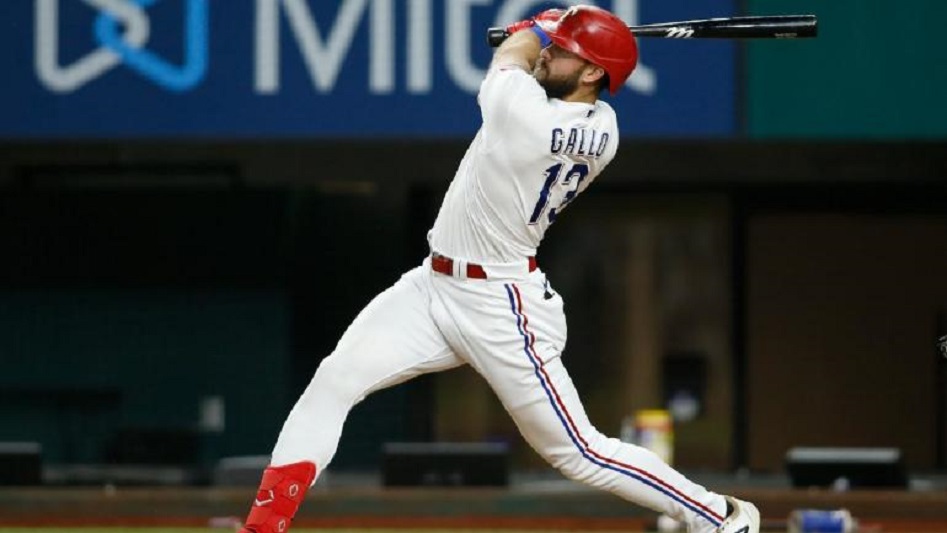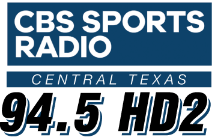
New York and Texas reportedly made the biggest trade of MLB deadline week
The New York Yankees and Texas Rangers reportedly agreed to the biggest trade (in scope and size) of deadline week on Wednesday, swapping six players in a deal headlined by slugger Joey Gallo.
The long story made short is that Gallo provides the Yankees with another fearsome middle-of-the-order bat who can be controlled through next season. The Rangers, meanwhile, received a handful of prospects to stock their farm as part of their ongoing rebuilding effort.
We here at CBS Sports are the judgmental kind, if little else. As such, you’ll find our instant-reaction grades for both sides of this trade below. It should go without saying that this is more of an art than a science. First, let’s reprint the terms of the deal, as reported by YES Network’s Jack Curry:
Rangers trade: OF/1B Joey Gallo, LHP Joely Rodríguez
Yankees trade: 2B Ezequiel Duran, 2B Trevor Hauver, RHP Glenn Otto, SS Josh Smith
Now, onto the hot air.
Yankees grade: A
The Yankees entered Wednesday ranked 24th in the majors in runs scored and 12th in wRC+, a FanGraphs catch-all measure that adjusts for ballpark (among other variables). It’s fair to write the Yankees expected better, much better, from their offense coming into the season. Injuries and underperformance have left Aaron Boone little choice other than trotting out starting lineups over the past week that include the likes of Ryan LaMarre, Greg Allen, and Estevan Florial. To quote former Yankees skipper Joe Girardi: it’s not what you want.
Gallo and his seasonal line of .223/.379/.490 (139 OPS+) with 25 home runs and six steals (on six tries), then, is an immediate and massive upgrade for the Yankees. He’s known as a prodigious slugger for good reason: his 138 home runs since the start of the 2017 season rank sixth in the majors. He isn’t plodding or defensively challenged, though, the way that similar hitters in the past (ahem, Adam Dunn) were. Gallo is more than athletic enough to play across the outfield, including center, and he makes for an easy target at the cold corner. His protean nature is a bonus for a Yankees team that can’t seem to rely on any given player’s availability.
Gallo is also known for his strikeouts. Again, it’s for good reason. He’s punching out less often than he has at any other point in his career (32 percent), and it’s still the second-highest clip among qualifying big-league hitters. The good news is Gallo has made serious gains with his approach, becoming choosier and less prone to fishing the past several years. As frustrating as his low average and his three-strikeout games might be, he makes up for those flaws by hitting the ball hard and commanding the strike zone. Factor in the secondary value he contributes with his defense, versatility, and baserunning, and he’s a legitimate All-Star-caliber player — oh, and he’s controllable for an additional season, at a price below his market value.
It’s possible that stacking together a bunch of high-strikeout hitters will prove to be a mistake, and that the Yankees lineup will be less potent than the sum of its parts. But those are risks the Yankees have to take right now in order to overcome a 2 ½ game deficit in the wild card race — especially given that they didn’t have to deal from their handful of top prospects to get a deal done. (They did, however, have to move a glut of up-system depth.)
Gallo isn’t coming to New York alone, either. Rodríguez is a sinkerballing lefty with one of the most extreme release points in the majors. His overall numbers aren’t pretty, but he’s held lefties to an OPS under .500 dating back through last season. Add Rodríguez to Clay Holmes, another recent trade acquisition, and it appears the Yankees are prioritizing groundballers in their bullpen right now. At minimum, he should help replace Justin Wilson, a vet lefty the Yankees dealt (alongside right-hander Luis Cessa) to the Cincinnati Reds on Tuesday evening.
Rangers grade: B
You can make the argument the Rangers deserve an A grade, but they didn’t get one of the Yankees’ four or five best prospects. Duran is close to that level, though, and they took advantage of New York’s forthcoming 40-player-roster crunch to amass additional depth. Duran and Otto will both require protection from this winter’s Rule 5 Draft; the Rangers, a rebuilding team, can make those arrangements a lot easier than the Yankees.
Duran, 22, has hit .290/.374/.533 with 12 home runs and 12 stolen bases (on 19 tries) this season at High-A. He’s drawn comparisons to longtime second baseman Dan Uggla because of his raw power (he’s an exit-velocity darling in addition to his obvious slugging and ISO charms) and limited defensive chops. Duran has improved upon both his walk and strikeout rates this year, an encouraging sign for someone nearing a Double-A assignment.
Hauver, 22, was overshadowed in a loaded Arizona State lineup that included Spencer Torkelson, Gage Workman, and Alika Williams, among others. He’s a bat-first second baseman who has mashed to the tune of a .288/.445/.498 line in 66 games at A-ball. Hauver hits the ball hard and commands the strike zone; that’s a good combination for anyone, and it’s why some scouts are sweeter on him than his defensive profile would suggest.
Otto, 25, has produced eye-popping numbers this season while splitting time between Double- and Triple-A. Among those: a 3.33 ERA, a 6.76 strikeout-to-walk ratio, and 115 strikeouts in 75 innings. Otto has bled velocity over the last several years and has a concerning injury history, but he has three quality pitches (fastball, slider, curve) and his results are outstanding. It’s to be seen if his body can withstand a starter’s workload at the highest levels.
Smith, 23, is a small middle infielder who eschews batting gloves and who has hit .320/.435/.583 in 28 games since being promoted to High-A. Prior to his move, he led the Yankees’ A-ball affiliate in sweet-spot percentage — or, the percentage of balls hit between 10 and 30 degrees — which is notable since he was teammates there with Hauver, Austin Wells, and Anthony Volpe. Smith’s tools are considered to be more average than not, so he’ll need to keep hitting.
There’s another aspect worth mentioning here, and that’s how much this trade stinks for the Rangers fan base. Texas’ roster is now as void of fan favorites as its books are of meaningful long-term commitments. (Even that could get worse if/when the Rangers trade Kyle Gibson.) Texas just isn’t a fun watch right now, and that doesn’t seem likely to change anytime soon. You can understand if the Rangers were reluctant to commit to Gallo long term because of how his offensive game might deteriorate, but that doesn’t make the present reality any easier to stomach for fans who haven’t experienced a winning season since 2016.
— CBS SPORTS





